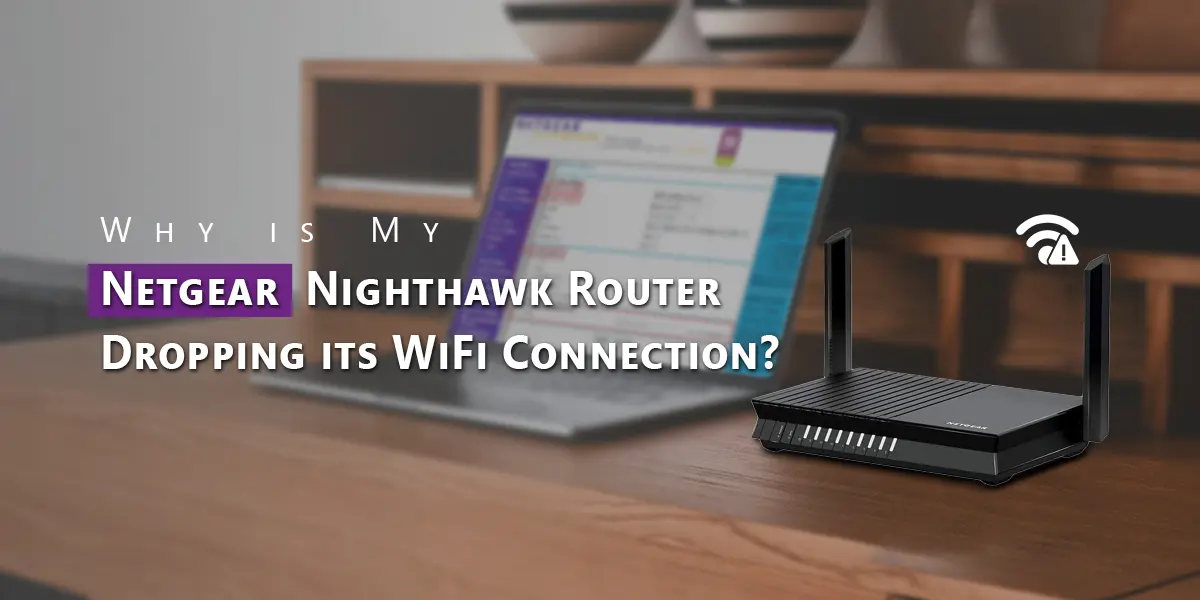
A dependable internet connection is a must in this era of never-ending connectedness. However, many users continue to find broken WiFi connections to be a constant annoyance despite technological developments. You’re not the only one who has a Netgear Nighthawk router and is constantly having this problem. But worry not! This in-depth tutorial will explore the typical causes of your Netgear Nighthawk router’s WiFi connection drops and offer workable fixes for these problems.
Interference from Other Devices:
- Interference from other electronic devices is one of the main causes of lost WiFi connections.
- The signal can be interfered with by appliances even nearby WiFi networks.
- Try moving your router to a central position far from these possible sources of interference to help reduce this.
- To reduce interference, you should also think about using your router’s settings to change to a less crowded WiFi channel.
Outdated Firmware:
- To ensure optimal performance routers like any other electronic device need to be updated regularly.
- Updated firmware may cause instability and problems with connectivity.
- If your Netgear Nighthawk router has firmware updates available check for them and install them right away.
- The majority of routers have an automated update check feature but you may also use the web interface to manually check for updates.
Overheating:
- While in use routers produce heat and too much heat can impair their functionality and possibly cause them to occasionally shut down.
- Make sure there are no other heat-producing devices nearby and that your Netgear Nighthawk router is situated in a well-ventilated area.
- If the router frequently overheats think about utilizing a cooling pad or a tiny fan to increase airflow around the device.
Wireless Range Restrictions:
- WiFi signals have certain restrictions particularly in larger homes or structures with thick walls despite their remarkable range.
- Your device’s WiFi signal may become weaker or disappear entirely if it is too far away from the router.
- To solve this think about investing in mesh WiFi systems or WiFi range extenders. This will provide a strong and consistent WiFi signal throughout your entire room.
Configuring the Router:
- Incorrect router configuration might sometimes lead to lost WiFi signals.
- Make sure the configurations on your Netgear Nighthawk router are tailored to your unique usage and environment.
- Be mindful of parameters including transmission power WiFi channel selection and security settings.
- Sometimes persistent connectivity issues can be resolved by returning the router to its factory default settings and reconfiguring it from the beginning.
Network Congestion:
- This might cause dropped connections and poor WiFi performance in homes with several connected devices or densely populated locations.
- Give higher priority to necessary devices like PCs and smart TVs.
- Furthermore, think about configuring your network with Quality of Service (QoS) settings to give particular apps or devices priority when it comes to bandwidth.
Hardware Problem:
- Although they are uncommon hardware problems might sometimes result in WiFi outages.
- Look for any visible wear and tear or physical damage on your Netgear Nighthawk router.
- If the router is still under warranty you should think about getting a replacement. Getting in touch with Netgear’s customer care if you suspect a hardware problem.
ISP Issues:
- Occasionally your Internet Service Provider (ISP) may be the source of the issue rather than your router.
- Verify whether similar connectivity problems are being experienced by other devices.
- If the issue continues on several devices get in touch with your ISP so they can investigate and fix any possible network problems.
Final thoughts
Finally, while losing WiFi connections with your Netgear Nighthawk router can be annoying, it’s not impossible to fix. Through the identification and resolution of the fundamental reasons defined in this book, you can experience a dependable and steady WiFi connection. Keep in mind that the best way to assess the success of your troubleshooting efforts is to test your connection after every step and apply these remedies methodically. You can say goodbye to WiFi problems and take advantage of flawless access across your house or place of business with perseverance and patience.

